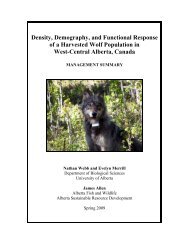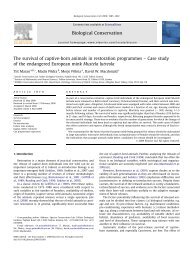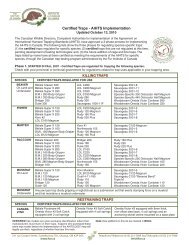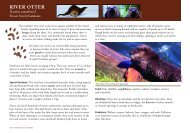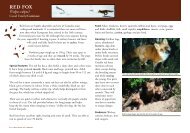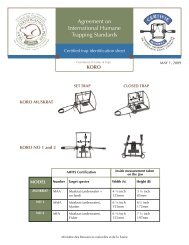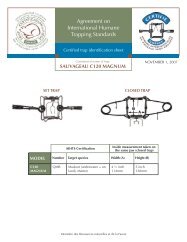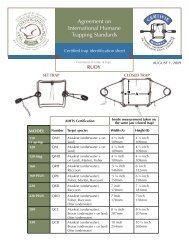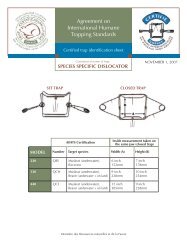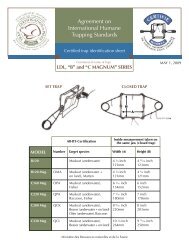Trapping - Fur Institute of Canada
Trapping - Fur Institute of Canada
Trapping - Fur Institute of Canada
You also want an ePaper? Increase the reach of your titles
YUMPU automatically turns print PDFs into web optimized ePapers that Google loves.
STUDENT LEARNING OUTCOMES:General Outcome: (Class time)1a) Students will take part in the Mandatory Manitoba Trapper EducationCourse (12 hours) which qualifies the successful student to acquire a Manitobatrapping license.Specific Learning Outcomes:- Learn the pre- and post-contact history <strong>of</strong> trapping, including thedevelopment <strong>of</strong> the “registered trapline program” in Manitoba- Understand the rationale for conservation laws, regulation, policies, andlicensing that concern trappers in Manitoba, including the Agreement onInternational Humane <strong>Trapping</strong> Standards (AIHTS)- Develop students’ awareness <strong>of</strong> conservation, sustainable use, and theenvironment.- Identify good trapping areas.- Understand the importance and sustainability <strong>of</strong> a healthy balance in natureas it pertains to the environment surrounding trapping areas.- Understand the Agreement on International Humane <strong>Trapping</strong> Standards(AIHTS) and how it applies to Aboriginal trappers and their trappingpractice including trapping under Aboriginal and Treaty rights to trap.- Understand fur as a commodity and the importance <strong>of</strong> Europe as a marketfor fur.- Understand furbearer biology, seasonality, behaviour, and speciesmanagement, including parasites and diseases that affect furbearers.- Know how to use all parts <strong>of</strong> the animal, including carcass by-products (suchas beaver castors) and understand how to dispose <strong>of</strong> carcasses when thecarcass is not going to be used for country foods.General Outcome (Practical application)1b) Students will understand the basic techniques for humane trapping.- Participate in a demonstration <strong>of</strong> trap sets for a) Beaver and Otter, b)Marten, Fisher and Mink and Raccoon, c) Muskrat d) Lynx, Wolf, Coyoteand Fox and e) Weasels f) other species common to their area (like fox andsquirrel).- Be able to identify and use appropriate tools to set various traps according tospecies.- Demonstrate how to set traps and snares on land.- Demonstrate how to set traps and/or snares under ice (such as when trappingbeaver).- Skin, flesh, form and dry pelts appropriately and according to species.- Bait and lure appropriately according to furbearer species.2



